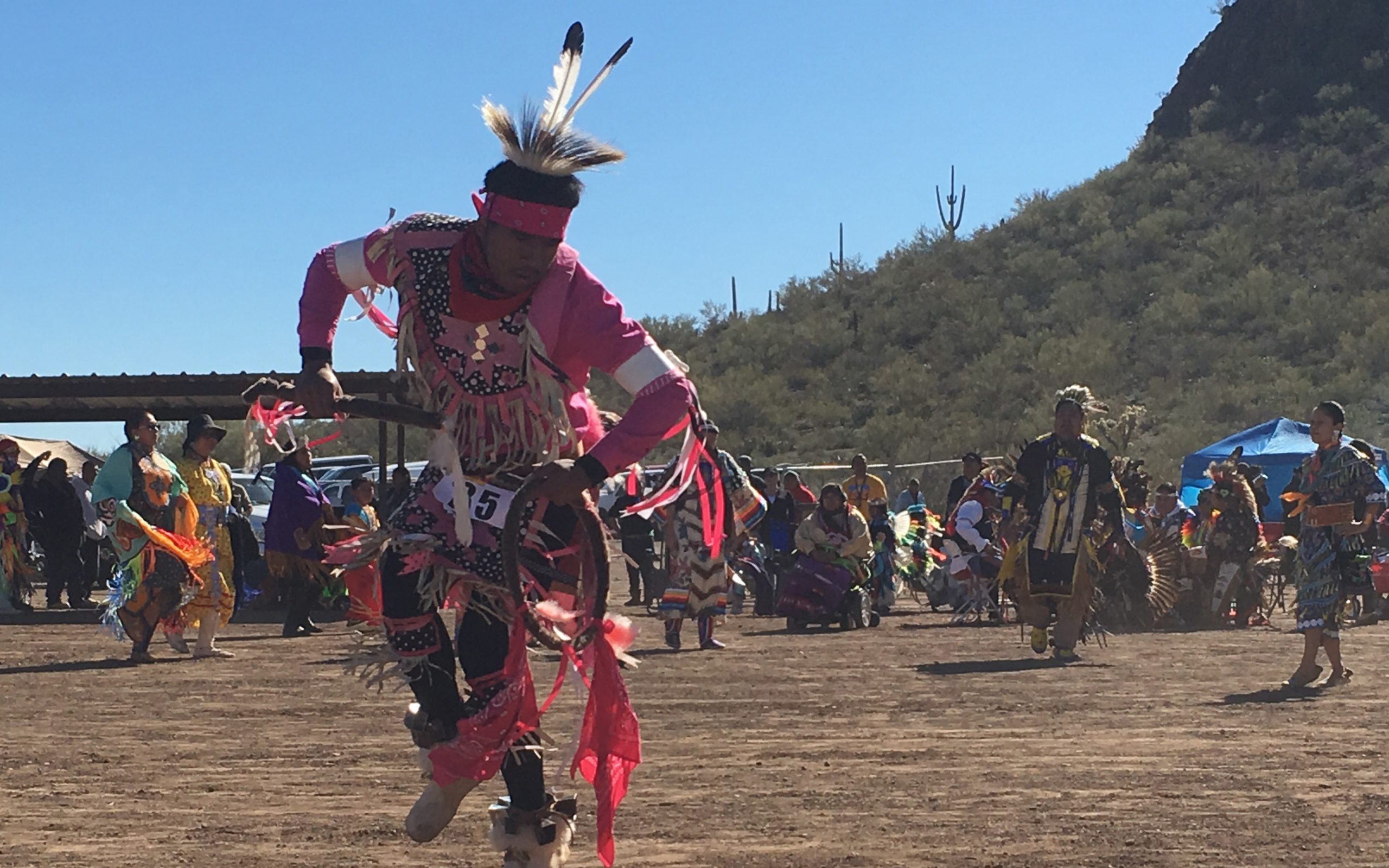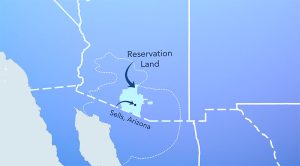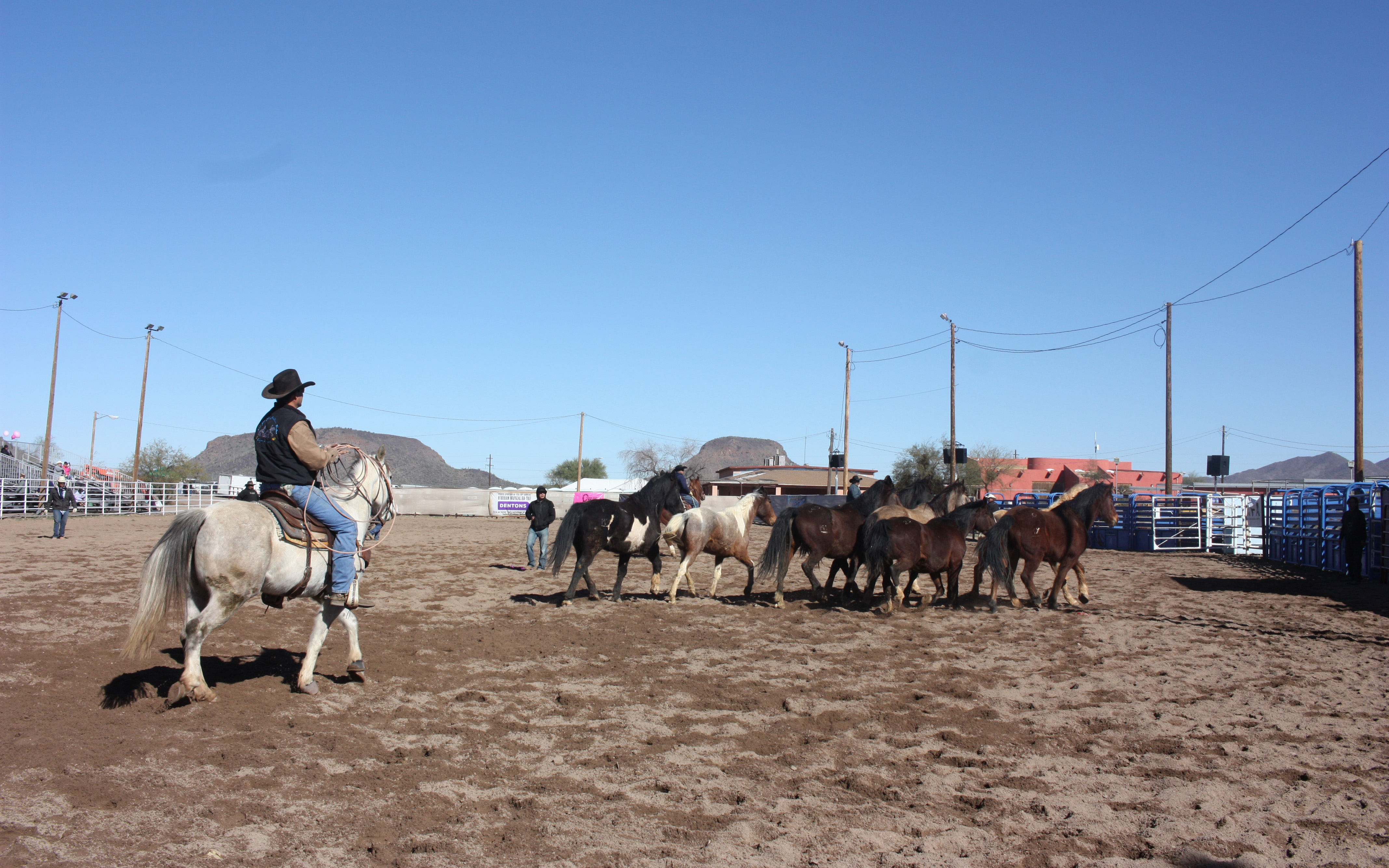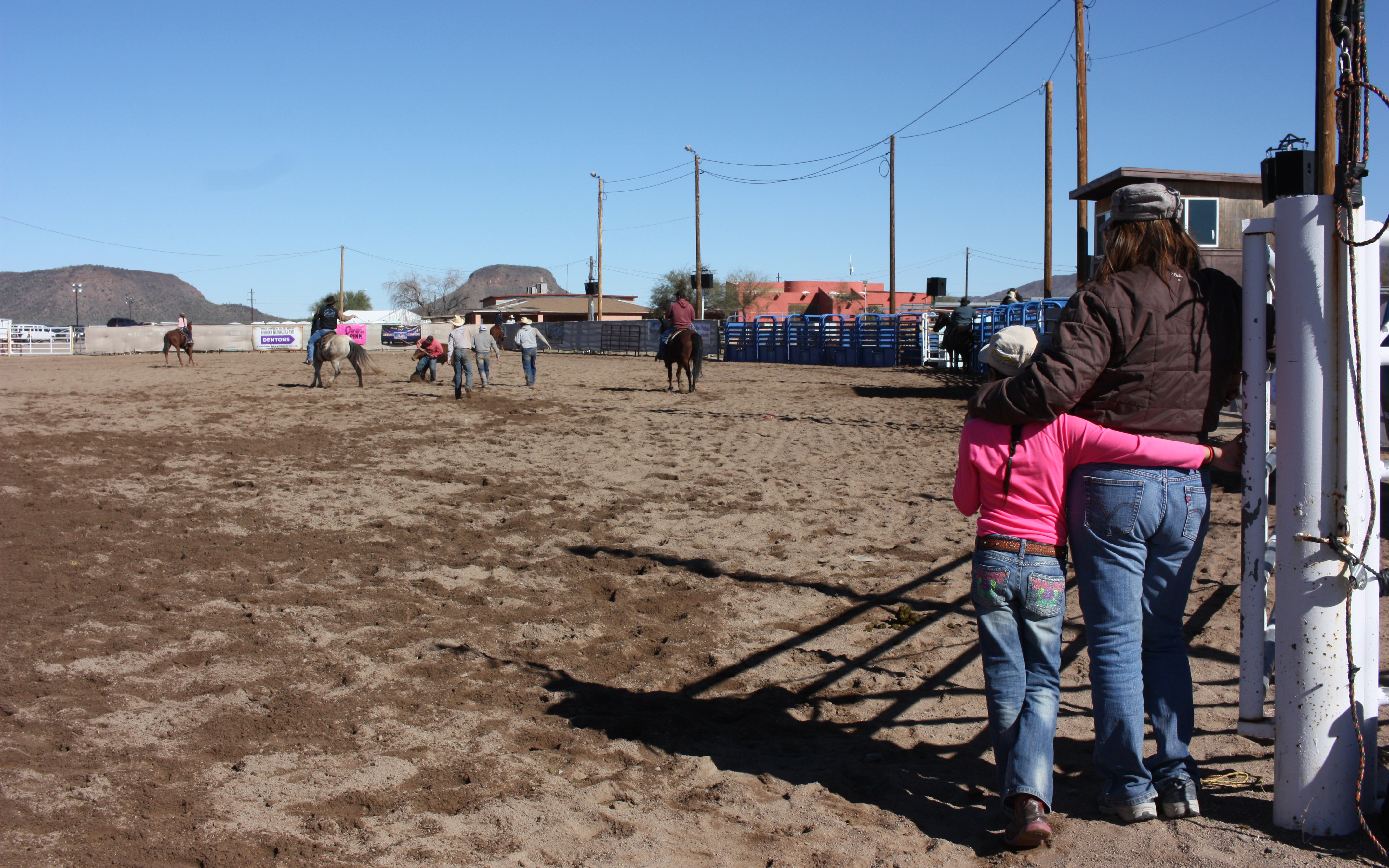
A dancer in the powwow contest at the annual Tohono O’odham Nation Rodeo & Fair, the largest event for the Tohono O’oham Nation. (Photo by Sarah Jarvis/Cronkite News)
TOHONO O’ODHAM NATION – On a cloudless morning in the southern Arizona town of Sells, Native Americans from across the state braced 40-degree temperatures to wrangle livestock and stay atop violently-gyrating bulls.
As the participants of the All Indian Masters Rodeo displayed their skill, a banner advertising job openings with the U.S. Border Patrol hung on the side of the arena’s wall.
It’s a reminder that the tribe’s ancestral land straddles the border and families on both sides are caught in the middle as President Trump moves quickly to fulfill his promise to build a border wall, add more Border Patrol agents and tighten border security.
We’ve been here before, for a long, long time; and I wish that we could leave [the border] as it is,” said Willard Thomas, 69, a member of the Tohono O’odham Elder Advisory Council.

Graphic by Katie Bieri/Cronkite News
“It’s really going to hurt a lot of people,” Thomas said. He, like may who oppose the border wall,
has relatives on both sides of the border.
Families from Arizona and Mexico gathered recently for the Tohono O’odham Nation Rodeo & Fair — a celebration of tribal traditions that go back hundreds of years and several generations. An estimated 10,000 people attended the event this year, according to tribal leaders. Most belong to the Tohono O’odham Nation which shares 75 miles of border with Mexico. The possibility of a border wall has many wondering how this celebration and other traditions will look in the future.
Thomas said he doesn’t know how difficult it’s going to be for those living on the Mexican side of the border to come across for an elder gathering in May.
Amanda Garcia, 14, lives on the reservation on the U.S. side. She celebrates her birthday every spring in Mexico, where she has several relatives. But those plans are on hold while her family waits to hear if construction will begin on the wall.
Before Sept. 11th, a barbed wire fence was all that marked the border on the reservation. Vehicle barriers now prevent tribal members and others from driving across. Instead, they get dropped off and walk across the border. A tribal ID is required to enter the U.S. reservation from Mexico.

A cowboy works with horses before the start of the Wapkial Ha-tas All Indian Rodeo in Sells, Arizona. The rodeo attracts fans and tribal members from both the U.S. and Mexico. (Photo by Sarah Jarvis/Cronkite News)
The Tohono O’odham Nation spans a geography of 2.8 million square acres — roughly the size of Connecticut — and has 33,000 members. It is the second-largest reservation in Arizona, both in geography and population, behind the Navajo Nation.
Last weekend’s four day event included traditional dances and music performances, a powwow contest, a parade that featured state representatives and local leadership across southern Arizona, a variety of sports tournaments, food and exhibits. But for those who participated in the rodeo, the family ties run especially deep.

Constance Benally and her daughter Angelina Begay, 8, watch participants practice before the All Indian Rodeo Open Show Saturday. Three of her daughters were in the Junior Rodeo. (Photo by Sarah Jarvis/Cronkite News)
Constance Benally, 46, has three daughters in the Junior Rodeo, one of whom began riding at age three. Benally is a contestant as well, and she said her daughters wanted to start riding because they saw her doing it. But she reminds them it’s an expensive tradition.
“I tell them, ‘if we can’t put the time into it, then we need to sell them (the horses),'” she said. “They’re worth money too.”
For 51-year-old rodeo contestant Victoria Randall, the family ties to rodeos go back generations. Her parents and grandparents competed and now her children and grandchildren do the same.
“It’s like a family when you come back here,” she said. “There’s so much history, I think, in Indian Rodeo.” Randall, who is a member of the San Carlos Apache tribe, said he father once won a rodeo in Flagstaff. “They gave him the money, but they never gave him his buckle,” she said. A pervasive lack of recognition for Native American rodeo participants is what she said spurred the creation of the Indian Rodeo.
She said Native Americans are interested in their traditions and culture, much of which has to do with animals and the environment. “I think we’re just born into it,” she said. “It’s just part of your life.”
(Video by Katie Bieri/Cronkite News)
Sylvia Hendricks, 62, secretary for the rodeo, is also carrying on a family tradition. The arena is named after her late husband Silas R. Hendricks. She said her husband kept her son and his friends busy with rodeo competitions so they wouldn’t “get into other things.” They still compete today, she said.
Tohono O’odham which means “desert people” learned to utilize the skills Europeans brought over during the conquest, expanding from hunters and gatherers to ranchers, Vice Chairman Verlon M. Jose said. Some people like to, I don’t know, go ski,” he said “Other people like to get on a 1,500 pound bull and see if they can stay on for eight seconds.”
Jose was adamant that the tribe would not let a border wall change their way of life. “We will continue to cross freely, not only for domestic, but for religious and cultural purposes,” he said.
Antonio Hernandez-Valencia, 75, said Tohono O’odham voices haven’t been represented enough in discussions about the border. “We’re not very outspoken about things; I think that’s our problem,” he said. “If somebody speaks out, then there’s a lot of criticism about that person.”
He said as neighbors, the U.S. and Mexico should work together to find a solution to border problems and he hopes the Trump administration will do “something positive about the whole thing.”
“We were all born on this earth, so how can people be aliens?” he said.